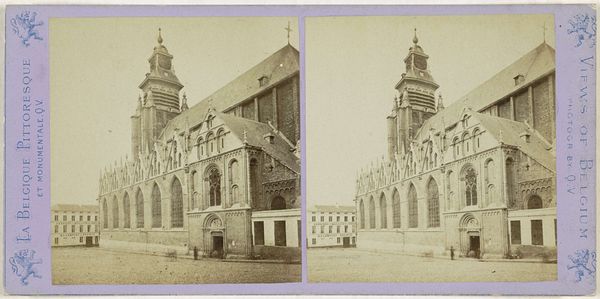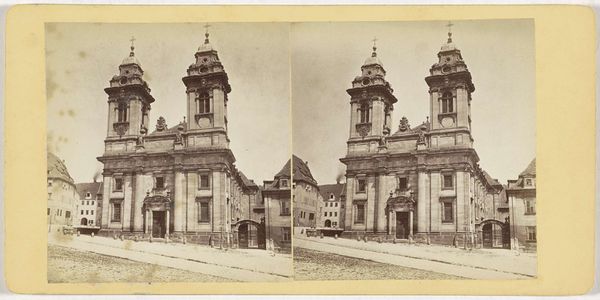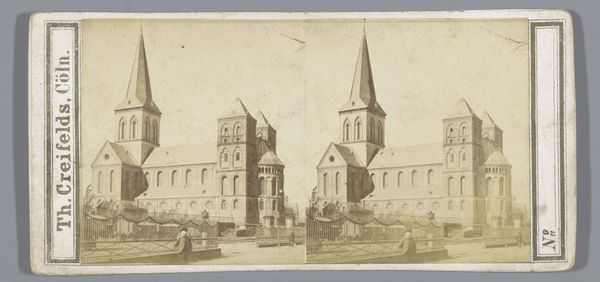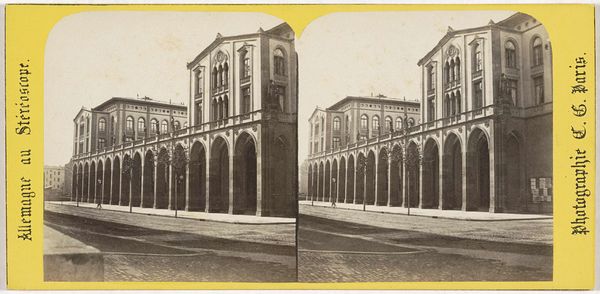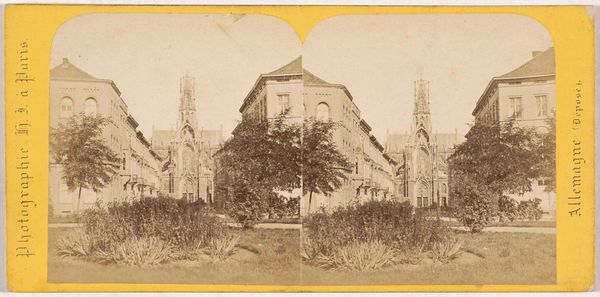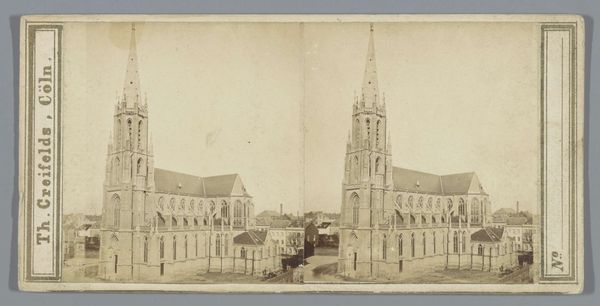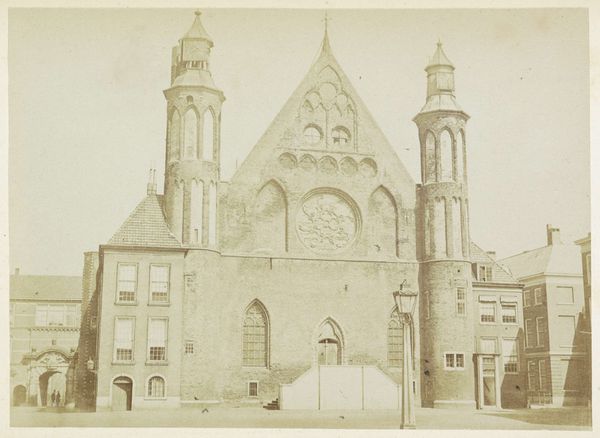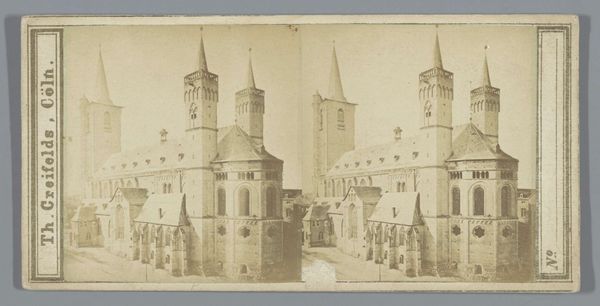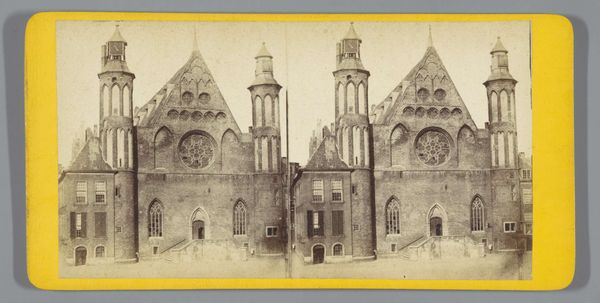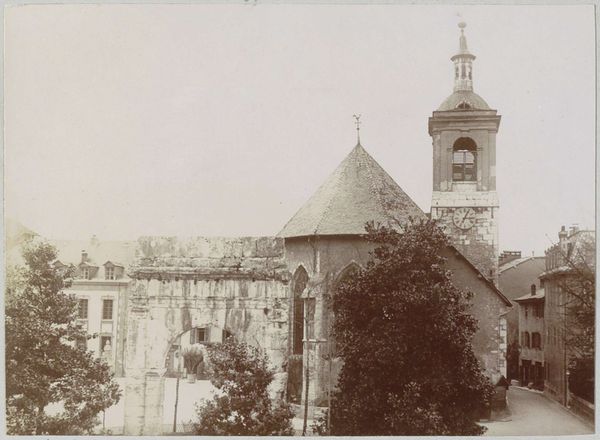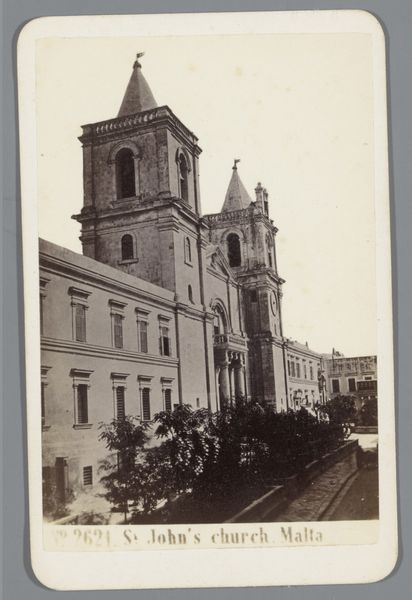
print, photography
#
16_19th-century
# print
#
street-photography
#
photography
#
geometric
#
cityscape
Dimensions: height 84 mm, width 173.5 mm
Copyright: Rijks Museum: Open Domain
Curator: This print, titled “Stiftskirche in Stuttgart, Duitsland”, was created in 1868 by Charles Gaudin, offering us a glimpse into the urban landscape of Stuttgart during that era. Editor: The stereoscopic format immediately strikes me. The slight variation in perspective between the two images enhances the sense of depth. I also observe the use of line, which directs the viewer's eye, framing the subjects of church and adjacent buildings. Curator: Precisely! The photographic process itself carries weight, think about how new this medium was. Consider, too, how Stuttgart had become a rapidly industrializing city around this time, marked by shifts in demographics and social structure. Editor: The sharp geometries and muted palette of the architecture are quite captivating; notice how the light, or lack thereof, almost creates a melancholic atmosphere. How do we think about Gaudin's choice to isolate the buildings in this way? The open square reinforces this architectural solitariness. Curator: It isolates them visually, yet positions them firmly within a period of seismic cultural shifts. The choice of a church as subject seems significant, particularly given the historical debates surrounding religion. Editor: Absolutely. There's something deeply intriguing in how the two buildings contrast. While the church's intricate Gothic lines reflect a historical approach to spiritual transcendence, the boxy form represents burgeoning modern efficiency. Curator: Right, but consider who photography empowered. The increasing urbanisation also created growing middle class of merchants, professionals and bureaucrats who now also had the means to commissioning or making these photographs, which had social repercussions in democratizing image creation. Editor: On the visual plane, the formal construction guides one to reflect on these deeper notions you raise. The work itself forms an excellent demonstration of using binary elements in one view. Curator: I’d agree. Charles Gaudin really encourages us to explore intersections of class, religion, progress, and artistic representation in an age defined by transition and tension. Editor: It seems our individual explorations into historical context and structural formalism both enrich and expand our reading of the print's enduring impact and aesthetic quality.
Comments
No comments
Be the first to comment and join the conversation on the ultimate creative platform.
